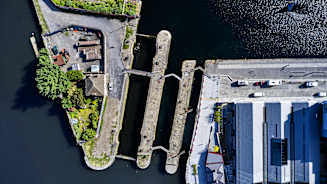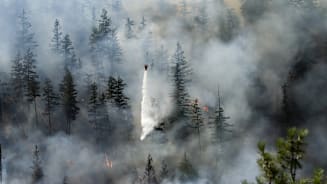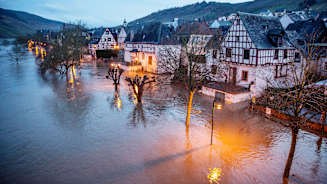Unlocking Energy Transition Investment
The transition from brown to green energy is attracting huge investment — from the expansion of renewables like solar and wind to emerging technologies like green hydrogen and carbon capture and storage. Annual clean energy investment worldwide will need to more than triple by 2030 to around $4 trillion to reach net zero emissions by 2050.1
While the need to rapidly expand sustainable energy capacity is clear, investments do not always flow as smoothly and quickly as they could. For example, concerns for natural catastrophe exposures, proto-type technologies and political risks have held back investment in some solar and offshore wind projects. However, insurance can address a range of political, technical, credit and operational challenges that would otherwise deter investment or increase the costs of financing renewable projects.
Insurance in the renewable space has yet to fully meet its potential, in part due to uncertainties over catastrophe exposures and models. Aon STG has been working with insurers to assess market opportunities in the renewable space and attract much-needed capacity.
There is much more that could be done collectively to bring more insurers into this space and begin to fill the growing protection gap. Solar farms built in remote locations where there is data on damaging hail and wind perils is not widely available. If the market can collectively build more credible models, it will unlock significant capacity for potentially thousands of renewable projects.”
Helping Homeowners Adapt to Climate Extremes
While the renewable energy market has already attracted insurers’ attention and capital, there is also significant growth potential from helping individuals, businesses and governments build resilience and manage the risks of a more volatile and less predictable climate. However, when it comes to homogenous lines of business, such as homeowners insurance, the industry has yet to fully grapple with climate change.
Property natural catastrophe insurance remains the industry’s bread and butter. But natural catastrophe exposures and losses are on the rise due to a combination of changing weather perils and exposure drivers such as inflation, population shifts and the increase in insured values in catastrophe-exposed regions.
This is an area where the insurance industry can make a difference. Through experience, knowledge and tools, insurers can help society better understand risks and make informed decisions around investments in loss prevention and mitigation. This includes reducing exposure, while at the same time ensuring a sustainable flow of premium for the industry.
Some properties now struggle to afford insurance in areas prone to wildfires or other natural disasters. However, carriers can help homeowners better understand the risks and where to best invest in loss prevention and mitigation.
In 2023, Aon entered a partnership with the University of California Merced and UCLA to leverage the latest climate science to assess how environmental conditions may drive wildfire frequency and severity and look ahead to understand how it will change in the future given different emissions pathways. In addition to enhancing wildfire modelling, the collaboration will look at where and how best to invest in resiliency measures and develop long-term climate change strategies for physical wildfire risk.
Insurers can also find climate-related growth opportunities from sources and customers that are currently uninsured by the private sector. For example, insurers could write more flood insurance to complement the National Flood Insurance Program (NFIP), which offers limited coverage for homeowners and businesses. There are also opportunities for insurers to work more closely with lenders to create products that protect against mortgage default from natural catastrophes.









































































































































































































































































































































































































